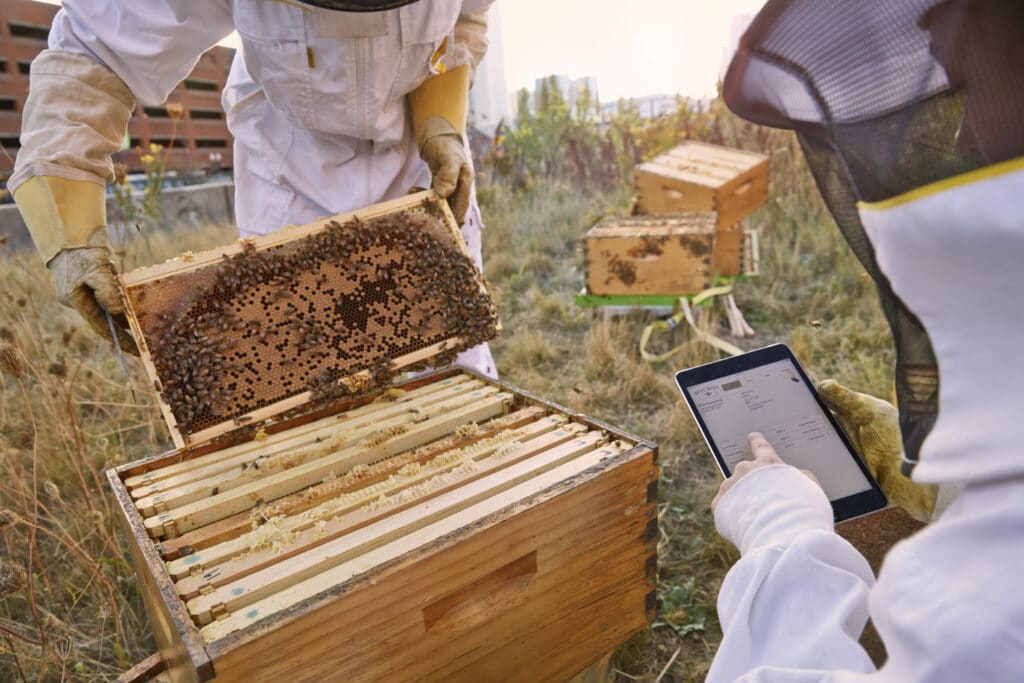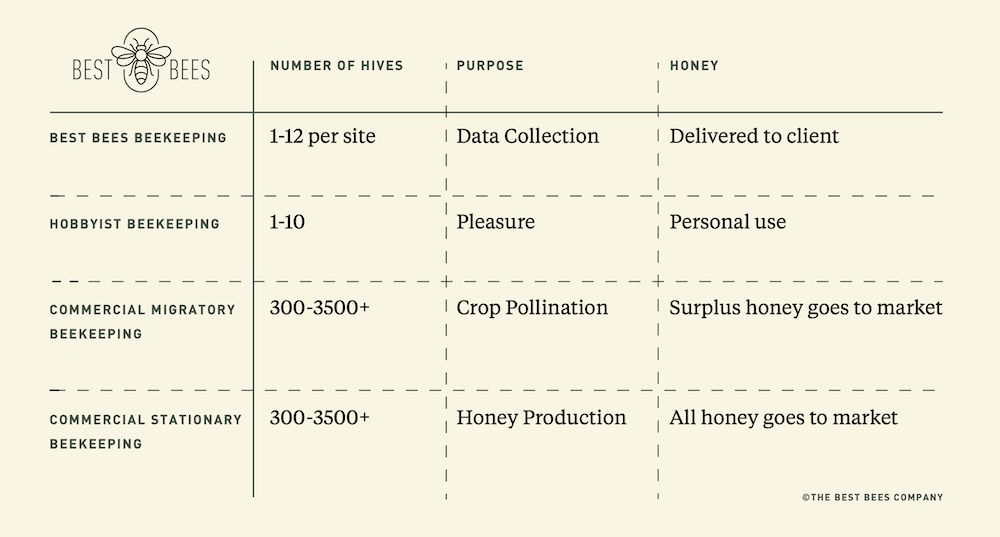Happy Pollinator Week! Our mission is to expand the bee population while improving the health of bees nationwide.however, it is not just bees that are under threat. Many other pollinators, including bats, flies, and butterflies, need our protection.
According to the United States Department of Agriculture, “Without pollinators, we don’t eat— it’s as simple as that— and, at the moment, large numbers of pollinators are dying.” To remedy pollinator declines, bees are the perfect model to study pollinator loss and pollination under environmental change. A multidisciplinary approach using high level, worldwide data, combining knowledge of the specie’s biology with a study of aspects of land use could greatly help us understand more about pollinator losses.
Understanding How Pollination Works
Pollination is the transfer of pollen from male to female flower parts that enable fertilization. While some plants are able to self-pollinate, others require cross pollination through wind, water, or insects. Once the male pollen grain lands on the female stigma, it forms a tube through which the male gametes can travel to reach the ovary. This process then begins to develop the course of fruits, nuts, and seeds.
Bees and Other Super Pollinators
This month, it’s bigger than the bees. The Pollinator Partnership states, “More than 1,000 of all pollinators are vertebrates such as birds, bats, and small mammals. Most (more than 200,000 species) are beneficial insects such as flies, beetles, wasps, ants, butterflies, moths and bees.”
Pollen is a great source of protein for bees. Because of this, bees do not intentionally provide pollination services. It’s one of nature’s best accidents.They pollinate flowers by incidentally brushing pollen grains off and transferring it to a stigma.
Diversity in pollination has an economic benefit that involves other species. Finding future models for agricultural systems: The Importance of Insect Pollinators for Agriculture, states “High pollinator diversity can improve several commercially- important crops. For example, strawberries pollinated by diverse insects are larger and have fewer deformations.” In turn, farmers are able to charge a higher price.
As noted by Buzz About Bees in the article, Wild Bees Are Important Pollinators, “some wild bees are super-efficient pollinators. Researchers Bosch and Kemp showed that it takes only 250 mason bees to pollinate an apple orchard. Surprisingly enough, it would take 30,000 to 40,000 honey bees to complete this job. Indeed, some pollinator species are more efficient and faster than others.
Courtesy of Whole Foods, the photos below show what the dairy and produce shelves would look like in a world without bees.
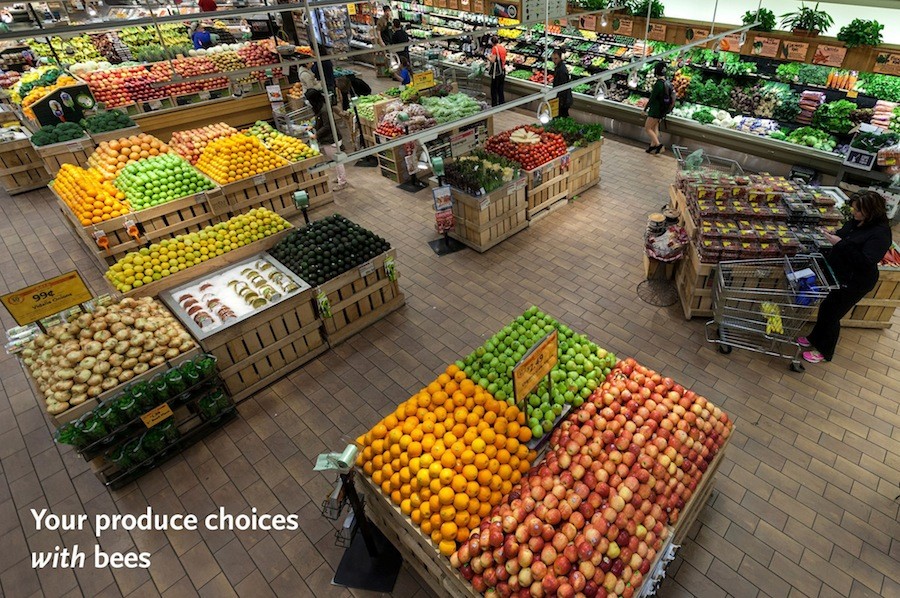
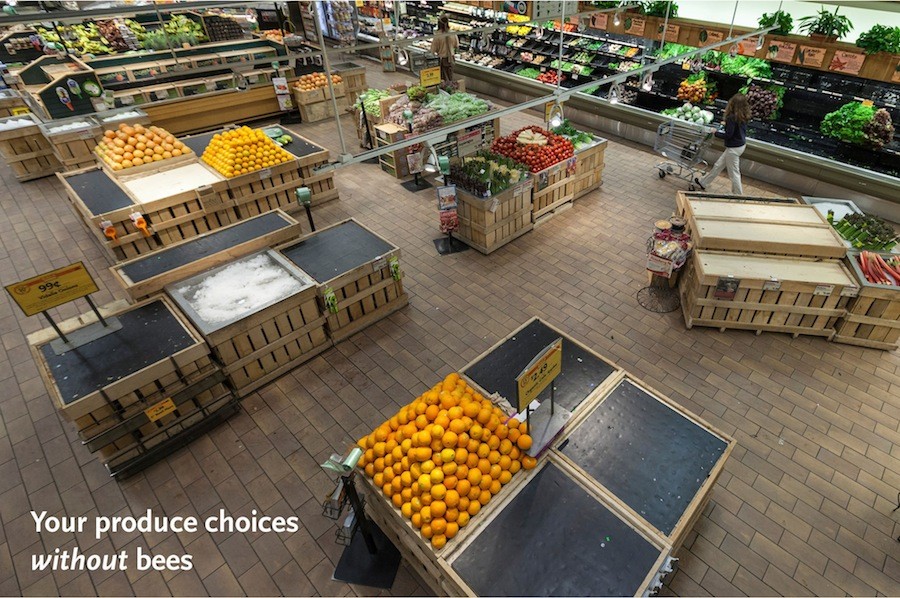

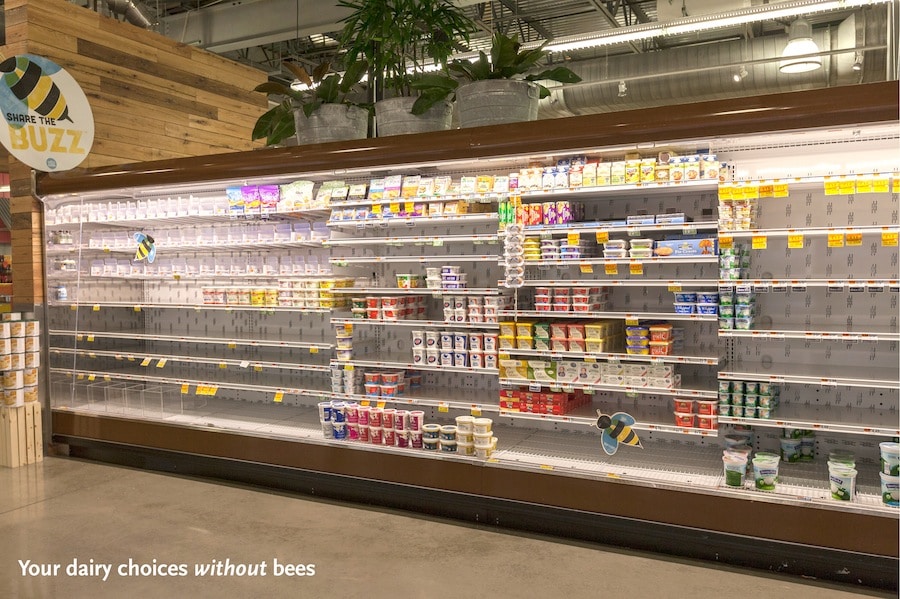
A World Without Pollinators
However, with pollinators on the decline, people are practicing hand pollination in order to aid plants in the reproductive process in some places in the world. This is necessary for places where there is not enough natural habitat for bees and other pollinators left to occupy.
As stated by the article Pollinating by hand: doing bees’ work, “In parts of China they now hand pollinate their orchards.” Dave Goulson, a bumblebee specialist at the University of Sussex continues that “There’s very little wildlife left at all in some areas. In these apple and pear orchards there aren’t any bees, and hence they have no choice. They either get no crop or they pollinate it themselves.”
How Science Can Help
The Citizen Science approach and research on bee behaviors over the past few years has greatly influenced the health of bee populations today. Science Mag points out that a new heat-resistant fungus might help fight the varroa mites, which are extremely harmful to bee colonies.
Science Mag continues that the Varroa destructor has plagued beekeepers and their bees for decades. While the newly discovered biopesticide may help combat the destructive mites, it must also be noted that this fungus is much safer on hives than other chemical pesticides.
This phenomenon gives us a glimpse into a world without bees. Bees provide us with 75% of our flowers and crops, making them vital to our survival on the planet. Just recently, bees were used to track infected samples of COVID-19. There’s so much good that these little creatures make possible.
HoneyDNA
Understanding what plants bees are visiting is an important indicator of bee health. HoneyDNA is a groundbreaking research tool that sequences the genetic material within honey samples, revealing their true plant origins.
HoneyDNA is a useful tool for seeing how many different plants bees visited to make honey. Not only does this help us estimate food availability, but it also helps highlight how bees can measure biodiversity and inform what to plant for bees to avoid colony collapse.
Data-Yielding Beehives
Bees are critical for a strong food system, economic security, and environmental resiliency. We created Bzzz, a proprietary hive management system, to ensure the health of each beehive and that each beehive is ready for research. Since its inception, Bzzz has tracked data points from over 50,000 hive visits— measuring population, queen health, honey sums, and disease and mite levels in thousands of beehives nationwide.
A network of data-yield beehives can inform us about our environment, the security of our food system, disaster recovery strategies, biodiversity, pollinator resiliency, and much more.
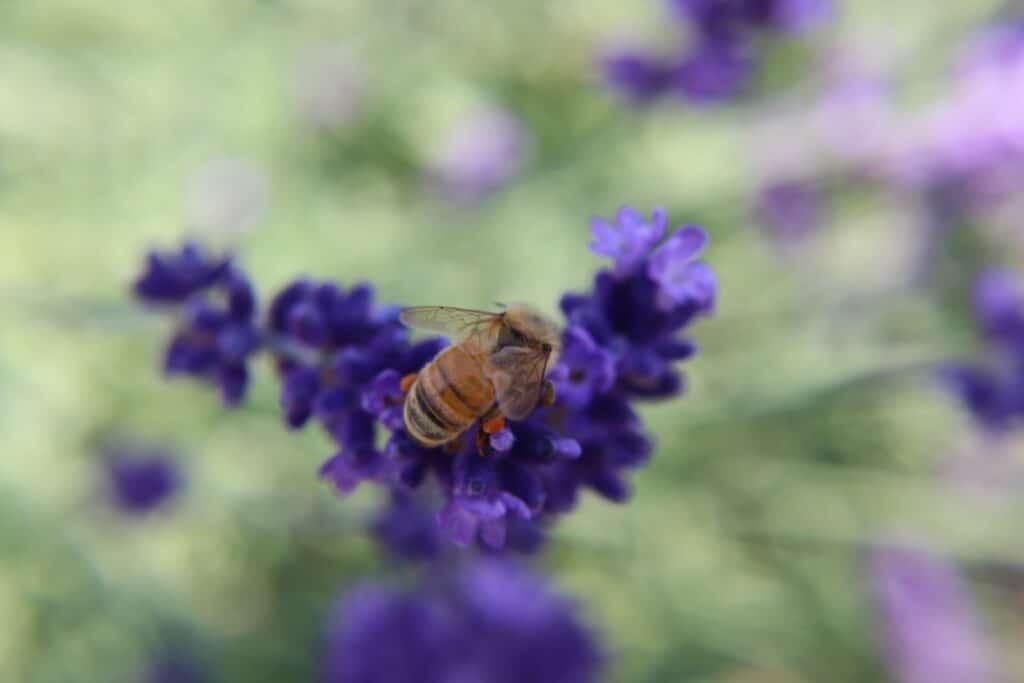
During Pollinator week, it’s important to recognize that plants depend on insects,hummingbirds, and bats for pollination. Many insects perform this service; however, bees are the world’s most important pollinators.
Learning more about pollinators is the best way to protect their declining populations. Drop us a line and let us know how you plan to celebrate and protect pollinators for the rest of the year.


